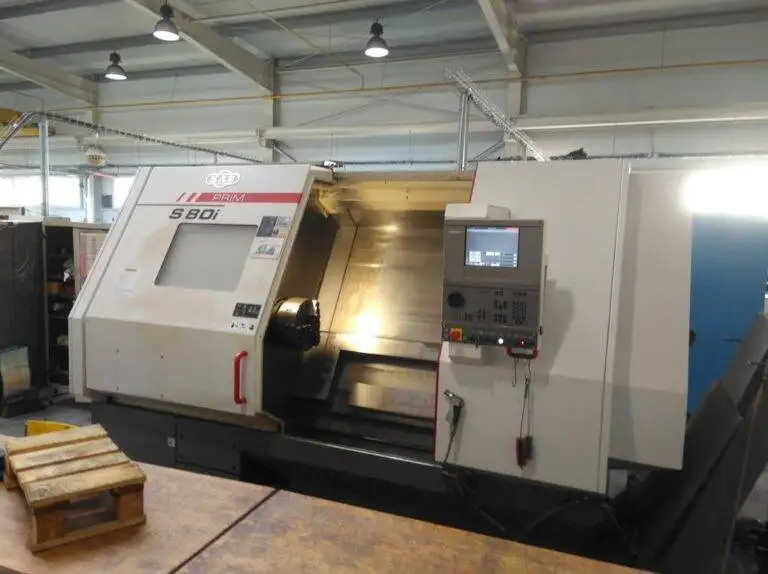High-speed networks in industry 4.0 solutions
High-Speed Networks in Industry 4.0 Solutions
In today’s rapidly evolving digital landscape, high-speed networks play a crucial role in enabling the seamless integration of various technologies and driving the advancements of Industry 4.0 solutions. As industries continue to embrace automation, artificial intelligence, and Internet of Things (IoT) devices, the need for reliable and efficient networks becomes more evident than ever before.
The Importance of High-Speed Networks
High-speed networks act as the backbone of Industry 4.0 solutions, facilitating the exchange of real-time data between machines, systems, and humans. These networks provide the necessary bandwidth to support the extensive communication requirements of modern industrial processes. By enabling fast and reliable data transfer, high-speed networks ensure prompt decision-making, enhanced productivity, and improved overall efficiency.
Benefits of High-Speed Networks in Industry 4.0
-
Real-Time Data Analysis: High-speed networks enable the collection and analysis of real-time data from various sources, such as sensors, machinery, and other IoT devices. This allows businesses to gain valuable insights into their operations, identify patterns, and make data-driven decisions promptly.
-
Improved Operational Efficiency: With high-speed networks, businesses can streamline their production processes by connecting different components of their operations seamlessly. This integration enables better coordination, reduces downtime, and optimizes the utilization of resources, ultimately leading to enhanced operational efficiency.
-
Faster Response Times: In dynamic manufacturing environments, quick response times are crucial to avoid disruptions and maintain smooth operations. High-speed networks enable rapid communication between different systems, enabling faster response times to address issues, adapt to changing demands, and prevent potential bottlenecks.
-
Enhanced Automation and Robotics: The rise of Industry 4.0 has paved the way for increased automation and robotics in various sectors. High-speed networks enable seamless communication between automated systems, robots, and human operators, allowing for efficient collaboration and improved safety in the workplace.
-
Scalability and Flexibility: As businesses grow and adapt to changing market demands, high-speed networks provide the scalability and flexibility required to accommodate expanding operations. These networks can handle increasing data traffic, support the addition of new devices, and ensure consistent connectivity even in highly dynamic environments.
Technologies Enabling High-Speed Networks
To achieve high-speed connectivity, Industry 4.0 solutions leverage various technologies and protocols, including:
-
Fiber Optic Cables: Fiber optic cables offer superior bandwidth and data transfer capabilities compared to traditional copper cables. These cables use pulses of light to transmit data, providing high-speed and reliable connectivity over long distances.
-
5G Networks: The advent of 5G networks brings ultra-fast speeds, low latency, and high device density for Industry 4.0 applications. 5G allows for seamless connectivity between a vast number of IoT devices, enabling real-time communication and data exchange.
-
Edge Computing: Edge computing brings computing resources closer to the data source, reducing latency and enabling faster data processing. By decentralizing computational power, edge computing enhances the efficiency of high-speed networks in Industry 4.0 solutions.
-
Software-Defined Networking (SDN): SDN separates the control plane from the data plane, providing greater flexibility and manageability of network resources. This technology allows for efficient traffic management, optimized network performance, and improved security in high-speed networks.
-
Cloud Computing: Cloud computing offers scalable and on-demand computing resources, reducing the burden on local networks. By leveraging the cloud, businesses can store and process large amounts of data, access applications remotely, and ensure seamless connectivity across multiple locations.
Conclusion
High-speed networks are the backbone of Industry 4.0 solutions, enabling businesses to leverage the power of automation, real-time data analysis, and seamless connectivity. With the rapid advancements in technology, it is essential for industries to invest in robust network infrastructure to support their digital transformation journey. By embracing high-speed networks, businesses can unlock new opportunities, enhance operational efficiency, and stay ahead in the ever-evolving digital landscape of Industry 4.0.

FAQ
Q: What role do high-speed networks play in Industry 4.0 solutions?
A: High-speed networks act as the backbone of Industry 4.0 solutions, facilitating real-time data exchange between machines, systems, and humans.
Q: What are the benefits of high-speed networks in Industry 4.0?
A:
1. Real-Time Data Analysis: High-speed networks enable the collection and analysis of real-time data, allowing businesses to make data-driven decisions promptly.
2. Improved Operational Efficiency: High-speed networks streamline production processes, optimize resource utilization, and enhance operational efficiency.
3. Faster Response Times: High-speed networks enable rapid communication, leading to faster response times in dynamic manufacturing environments.
4. Enhanced Automation and Robotics: High-speed networks enable seamless communication between automated systems, robots, and human operators, improving collaboration and safety.
Q: How do high-speed networks support scalability and flexibility in businesses?
A: High-speed networks provide the scalability and flexibility required for businesses to accommodate expanding operations and adapt to changing market demands.
Q: Why are reliable and efficient networks more important in today’s digital landscape?
A: With the increasing embrace of automation, artificial intelligence, and IoT devices, reliable and efficient networks are crucial for seamless integration, prompt decision-making, enhanced productivity, and improved overall efficiency in Industry 4.0 solutions.






You must be logged in to post a comment.